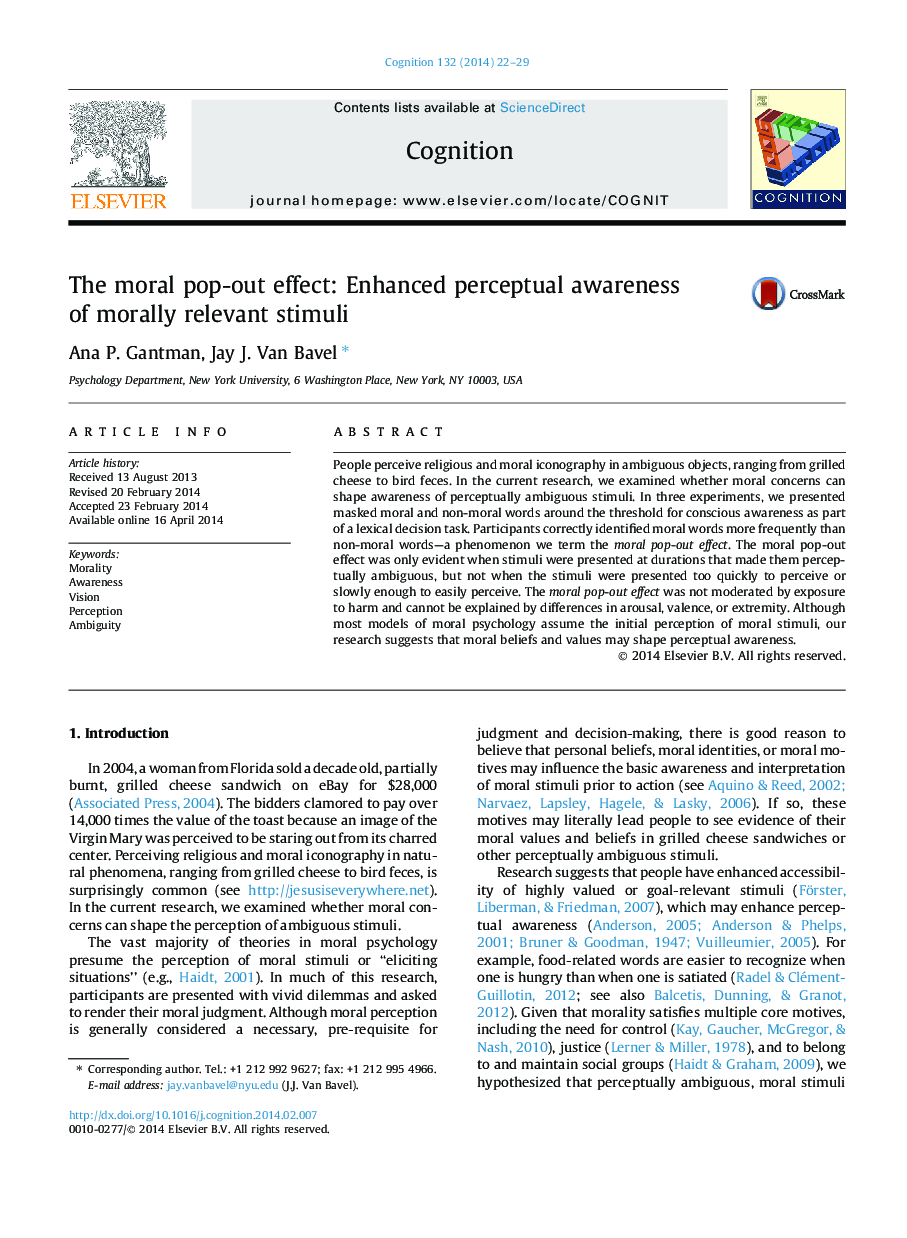| Article ID | Journal | Published Year | Pages | File Type |
|---|---|---|---|---|
| 10457754 | Cognition | 2014 | 8 Pages |
Abstract
People perceive religious and moral iconography in ambiguous objects, ranging from grilled cheese to bird feces. In the current research, we examined whether moral concerns can shape awareness of perceptually ambiguous stimuli. In three experiments, we presented masked moral and non-moral words around the threshold for conscious awareness as part of a lexical decision task. Participants correctly identified moral words more frequently than non-moral words-a phenomenon we term the moral pop-out effect. The moral pop-out effect was only evident when stimuli were presented at durations that made them perceptually ambiguous, but not when the stimuli were presented too quickly to perceive or slowly enough to easily perceive. The moral pop-out effect was not moderated by exposure to harm and cannot be explained by differences in arousal, valence, or extremity. Although most models of moral psychology assume the initial perception of moral stimuli, our research suggests that moral beliefs and values may shape perceptual awareness.
Related Topics
Life Sciences
Neuroscience
Cognitive Neuroscience
Authors
Ana P. Gantman, Jay J. Van Bavel,
